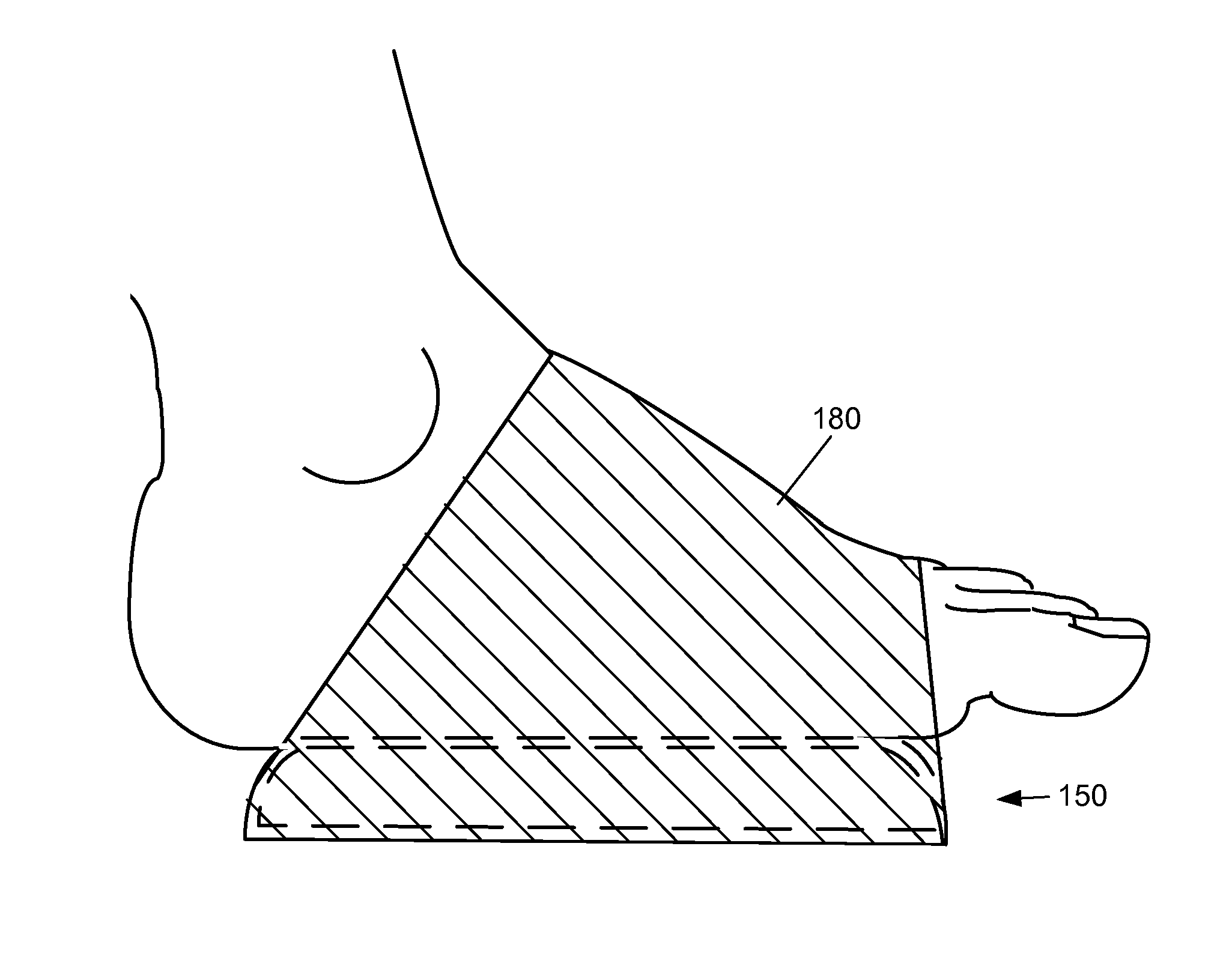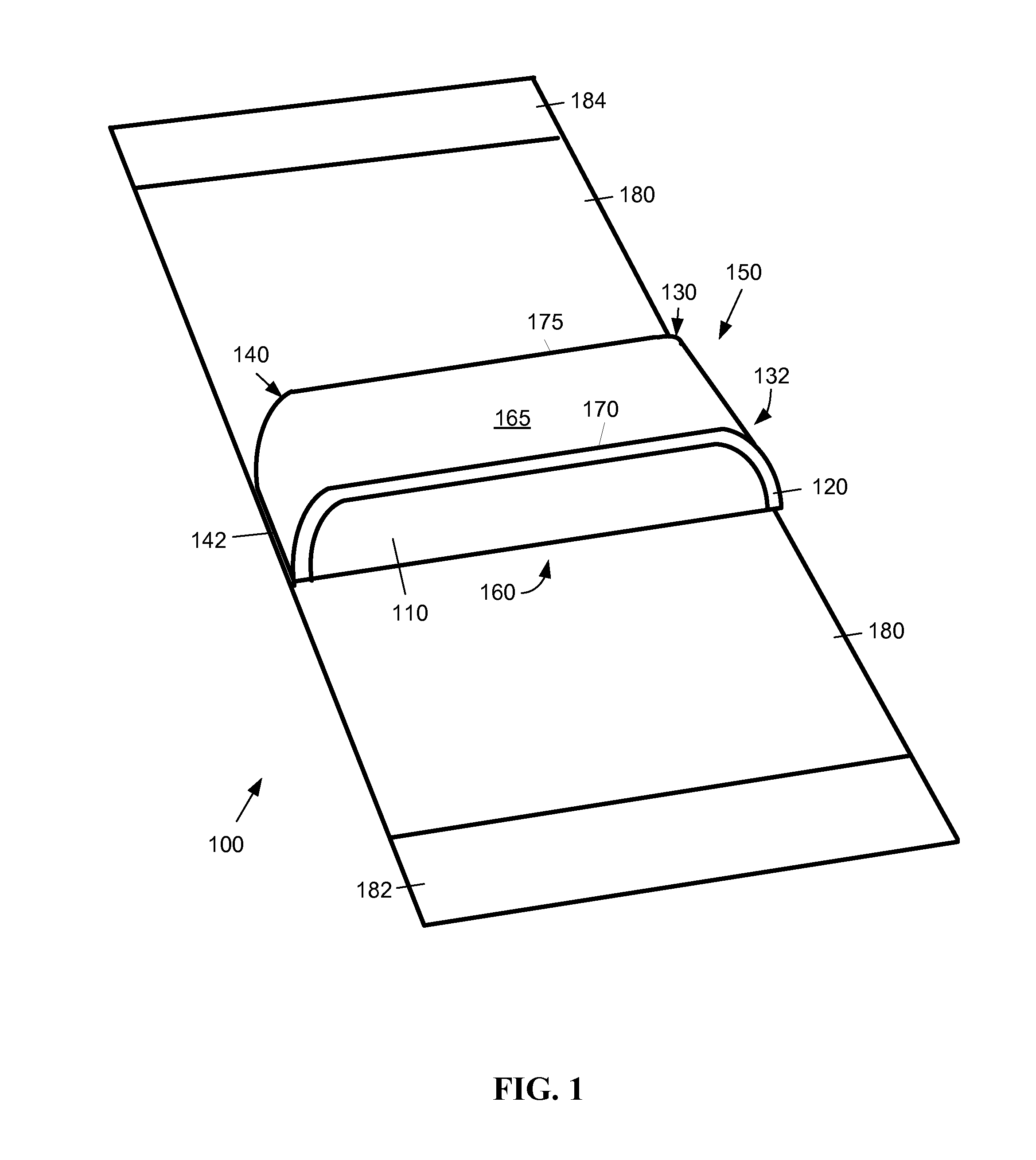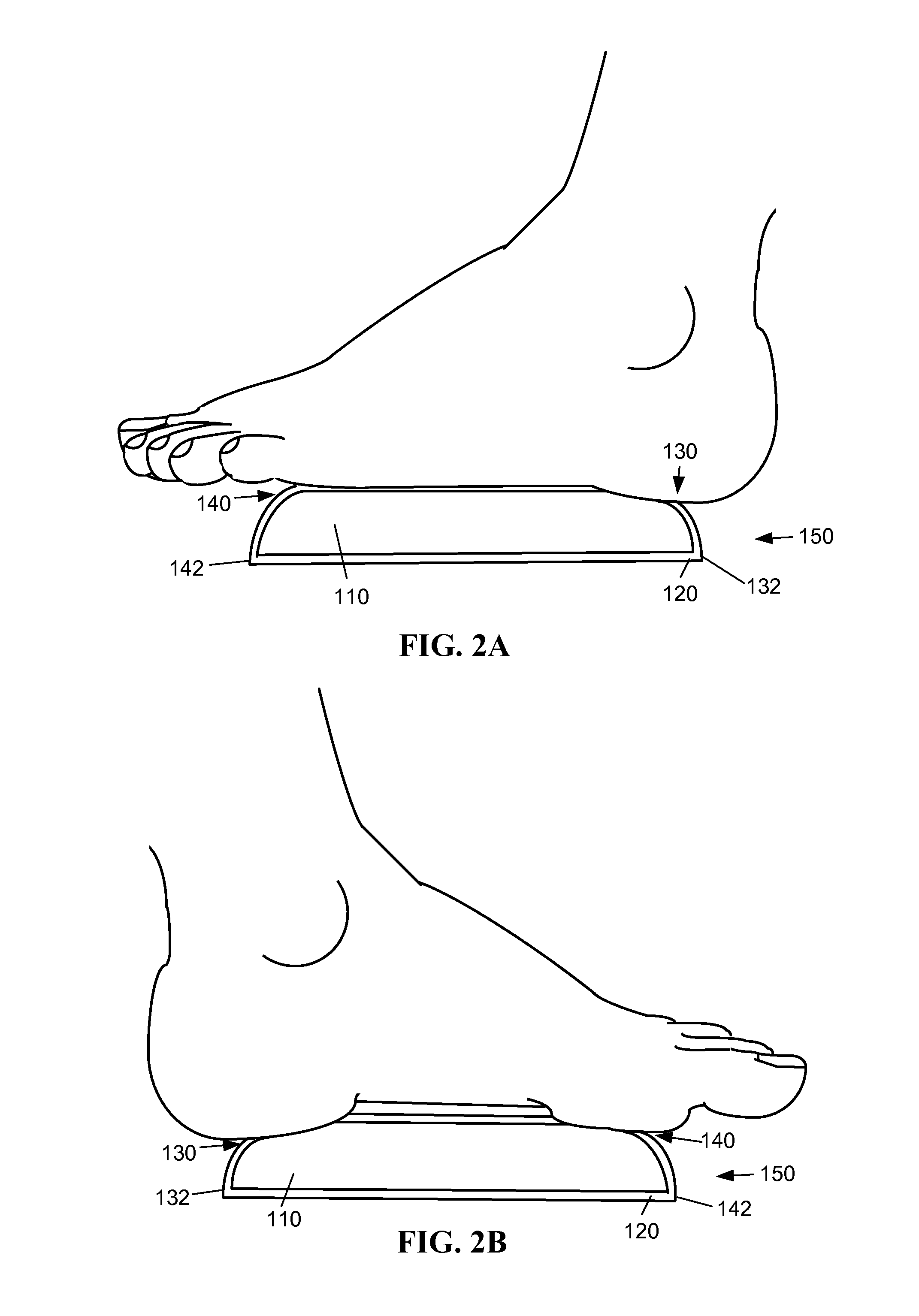Apparatus for plantar fasciitis treatment and method for making same
a plantar fasciitis and apparatus technology, applied in the field of orthopaedic devices, can solve the problems of reducing the healing process, reducing the healing effect, dull pain and/or stiffness at the bottom of the heel, etc., and achieves the effect of effective treatment and preventing plantar fasciitis, facilitating use, and encouraging complian
- Summary
- Abstract
- Description
- Claims
- Application Information
AI Technical Summary
Benefits of technology
Problems solved by technology
Method used
Image
Examples
Embodiment Construction
[0039]Reference will now be made in detail to embodiments of the present invention, examples of which are illustrated in the accompanying drawings. Exemplary embodiments of a plantar fasciitis arch support (PFAS) device for the treatment and prevention of plantar fasciitis according to the invention are described in detail. Wherever possible, the same reference numbers are used in the drawings and the description to refer to the same or like parts.
[0040]An exemplary embodiment of a device for treating and preventing plantar fasciitis includes a flat-based, curved-top block that is positioned beneath the foot at the arch and is fitted at or near the points where the fascia attaches to the bone. The block is cut with a flat top surface and curved at the edges to provide a gentle but definite compression and stretch to the heel-end of the plantar fascia, the point that is generally the source of pain for plantar fasciitis sufferers. The block is affixed to the base of the foot with the...
PUM
 Login to View More
Login to View More Abstract
Description
Claims
Application Information
 Login to View More
Login to View More - R&D
- Intellectual Property
- Life Sciences
- Materials
- Tech Scout
- Unparalleled Data Quality
- Higher Quality Content
- 60% Fewer Hallucinations
Browse by: Latest US Patents, China's latest patents, Technical Efficacy Thesaurus, Application Domain, Technology Topic, Popular Technical Reports.
© 2025 PatSnap. All rights reserved.Legal|Privacy policy|Modern Slavery Act Transparency Statement|Sitemap|About US| Contact US: help@patsnap.com



